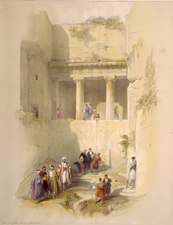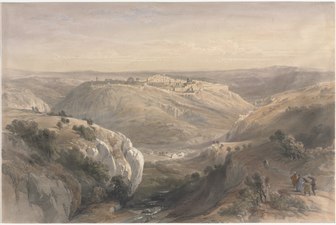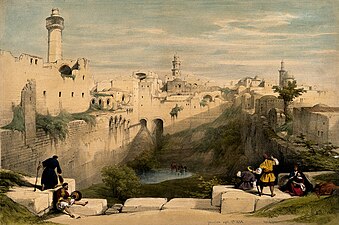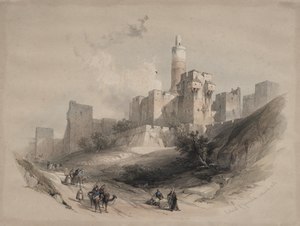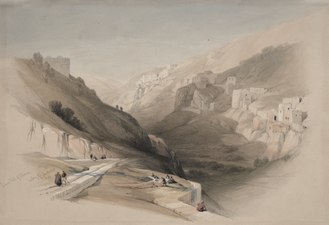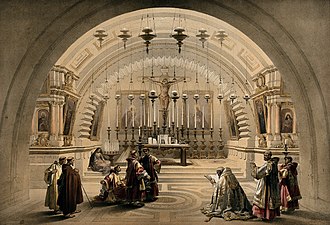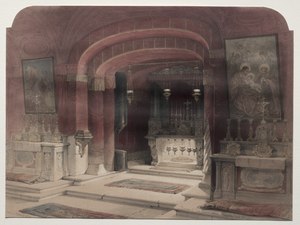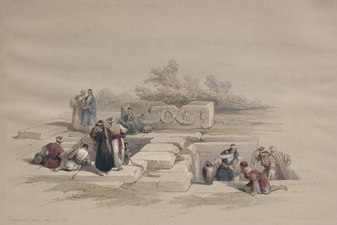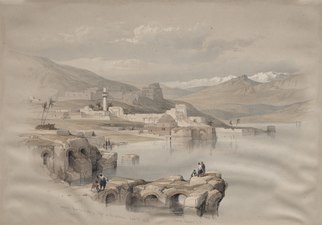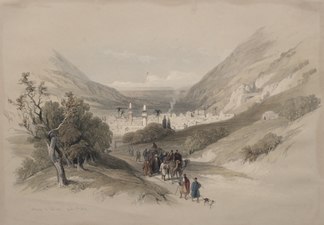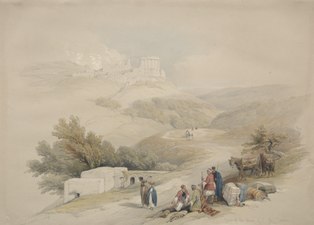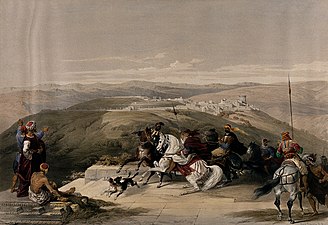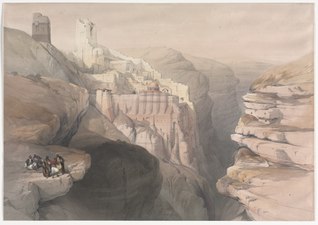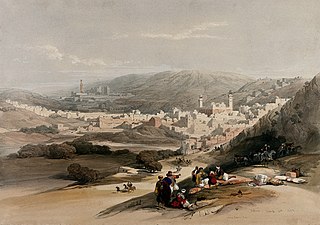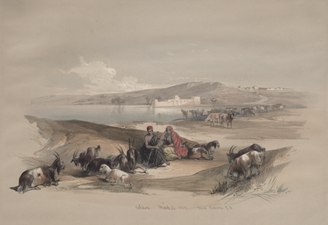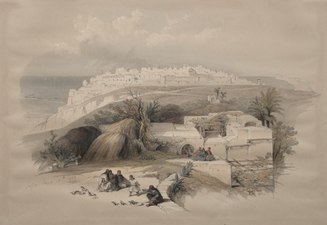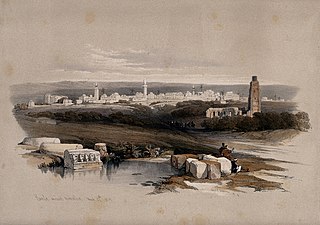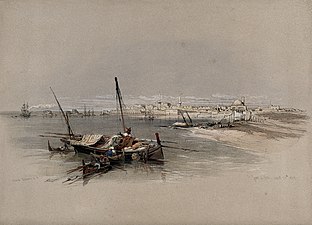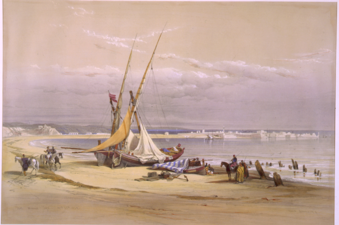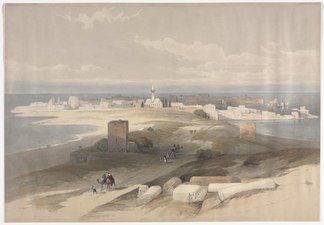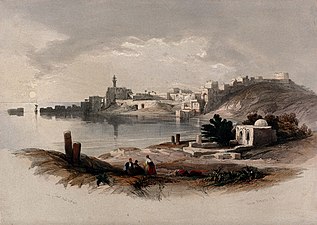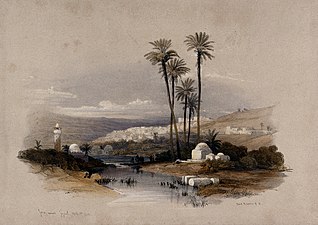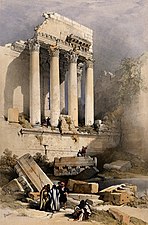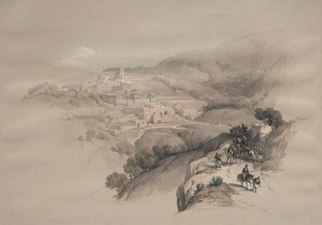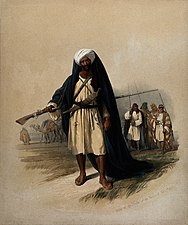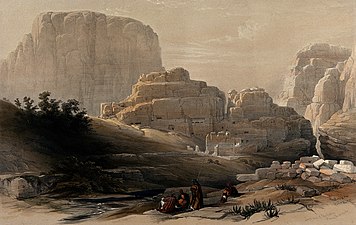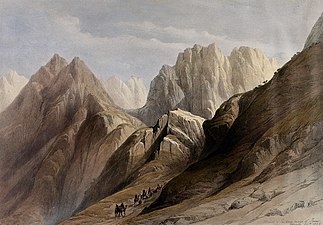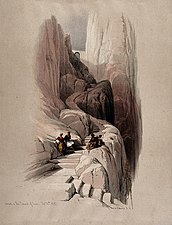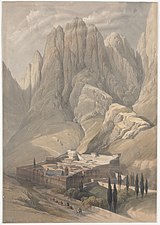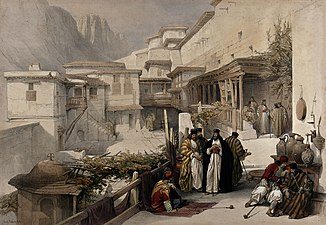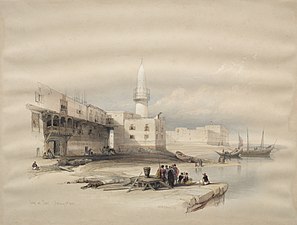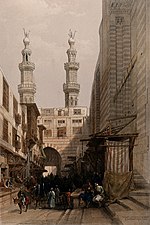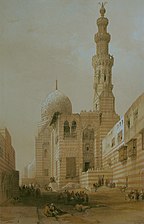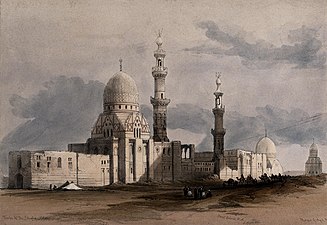
Aswan is a city in Southern Egypt, and is the capital of the Aswan Governorate.

Thebes, known to the ancient Egyptians as Waset, was an ancient Egyptian city located along the Nile about 800 kilometers (500 mi) south of the Mediterranean. Its ruins lie within the modern Egyptian city of Luxor. Thebes was the main city of the fourth Upper Egyptian nome and was the capital of Egypt for long periods during the Middle Kingdom and New Kingdom eras. It was close to Nubia and the Eastern Desert, with its valuable mineral resources and trade routes. It was a religious center and the most venerated city during many periods of ancient Egyptian history. The site of Thebes includes areas on both the eastern bank of the Nile, where the temples of Karnak and Luxor stand and where the city was situated; and the western bank, where a necropolis of large private and royal cemeteries and funerary complexes can be found. In 1979, the ruins of ancient Thebes were classified by UNESCO as a World Heritage Site.
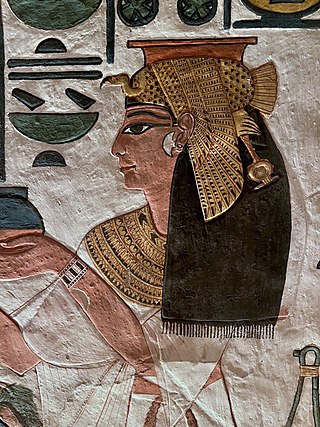
Nefertari, also known as Nefertari Meritmut, was an Egyptian queen and the first of the Great Royal Wives of Ramesses the Great. She is one of the best known Egyptian queens, among such women as Cleopatra, Nefertiti, and Hatshepsut, and one of the most prominent not known or thought to have reigned in her own right. She was highly educated and able to both read and write hieroglyphs, a very rare skill at the time. She used these skills in her diplomatic work, corresponding with other prominent royals of the time. Her lavishly decorated tomb, QV66, is one of the largest and most spectacular in the Valley of the Queens. Ramesses also constructed a temple for her at Abu Simbel next to his colossal monument there.

The Karnak Temple Complex, commonly known as Karnak, comprises a vast mix of temples, pylons, chapels, and other buildings near Luxor, Egypt. Construction at the complex began during the reign of Senusret I in the Middle Kingdom and continued into the Ptolemaic Kingdom, although most of the extant buildings date from the New Kingdom. The area around Karnak was the ancient Egyptian Ipet-isut and the main place of worship of the 18th Dynastic Theban Triad, with the god Amun as its head. It is part of the monumental city of Thebes, and in 1979 it was added to the UNESCO World Heritage List along with the rest of the city. Karnak gets its name from the nearby, and partly surrounded, modern village of El-Karnak, 2.5 kilometres north of Luxor.

Luxor is a city in Upper Egypt, which includes the site of the Ancient Egyptian city of Thebes. Luxor had a population of 1,333,309 in 2020, with an area of approximately 417 km2 (161 sq mi) and is the capital of the Luxor Governorate. It is among the oldest inhabited cities in the world.

Johann LudwigBurckhardt was a Swiss traveller, geographer and Orientalist. Burckhardt assumed the alias Sheikh Ibrahim Ibn Abdallah during his travels in Arabia. He wrote his letters in French and signed Louis. He is best known for rediscovering two of the world's most famous examples of rock-cut architecture – the ruins of the ancient Nabataean city of Petra in Jordan and the temples of Abu Simbel in Egypt.
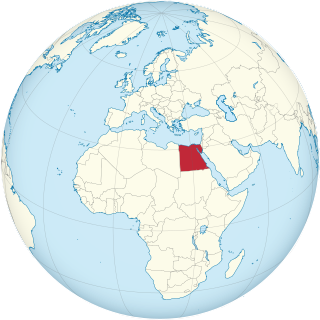
Articles related to Egypt include:

Abu Simbel is a historic site comprising two massive rock-cut temples in the village of Abu Simbel, Aswan Governorate, Upper Egypt, near the border with Sudan. It is located on the western bank of Lake Nasser, about 230 km (140 mi) southwest of Aswan. The twin temples were originally carved out of the mountainside in the 13th century BC, during the 19th Dynasty reign of the Pharaoh Ramesses II. Their huge external rock relief figures of Ramesses II have become iconic. His wife, Nefertari, and children can be seen in smaller figures by his feet. Sculptures inside the Great Temple commemorate Ramesses II's heroic leadership at the Battle of Kadesh.

David Roberts was a Scottish painter. He is especially known for The Holy Land, Syria, Idumea, Arabia, Egypt, and Nubia, a prolific series of detailed lithograph prints of Egypt and the Near East that he produced from sketches he made during long tours of the region (1838–1840). These and his large oil paintings of similar subjects made him a prominent Orientalist painter. He was elected as a Royal Academician in 1841.

The Ramesseum is the memorial temple of Pharaoh Ramesses II. It is located in the Theban Necropolis in Upper Egypt, on the west of the River Nile, across from the modern city of Luxor. The name – or at least its French form Rhamesséion – was coined by Jean-François Champollion, who visited the ruins of the site in 1829 and first identified the hieroglyphs making up Ramesses's names and titles on the walls. It was originally called the House of millions of years of Usermaatra-setepenra that unites with Thebes-the-city in the domain of Amon.Usermaatra-setepenra was the prenomen of Ramesses II.

The Colossi of Memnon are two massive stone statues of the Pharaoh Amenhotep III, which stand at the front of the ruined Mortuary Temple of Amenhotep III, the largest temple in the Theban Necropolis. They have stood since 1350 BC, and were well known to ancient Greeks and Romans, as well as early modern travelers and Egyptologists. The statues contain 107 Roman-era inscriptions in Greek and Latin, dated to between AD 20 and 250; many of these inscriptions on the northernmost statue make reference to the Greek mythological king Memnon, whom the statue was then – erroneously – thought to represent.

The Luxor Temple is a large Ancient Egyptian temple complex located on the east bank of the Nile River in the city today known as Luxor and was constructed approximately 1400 BCE. In the Egyptian language it was known as ipet resyt, "the southern sanctuary". It was one of the two primary temples on the east bank, the other being Karnak. Unlike the other temples in Thebes, Luxor temple is not dedicated to a cult god or a deified version of the pharaoh in death. Instead, Luxor temple is dedicated to the rejuvenation of kingship; it may have been where many of the pharaohs of Egypt were crowned in reality or conceptually.

Louis Maurice Adolphe Linant de Bellefonds better known as Linant Pasha was an explorer of Egypt and, as the chief engineer of Egypt's public works, 1831–1869, an influential engineer of the Suez Canal. He is listed as a founder of the Suez Canal Company.

El-Tarif is a necropolis on the West Bank of the Nile, at the site of ancient Thebes (Luxor), Egypt. It is located in the northwestern outskirts of Luxor and southeast of the Valley of the Kings, opposite Karnak, just to the southwest of the modern village of At-Tarif. It is the oldest of West Thebes' necropolises. It is a small mortuary temple, and the farthest north of the Tombs of the Nobles, and contains tombs of the late First Intermediate Period, Second Intermediate Period and early Middle Kingdom. Old Kingdom mastabas are possibly attributed to local rulers of the Fourth or Fifth Dynasty. Eleventh Dynasty tombs of local rulers have also been noted in the form of a series of rock-cut tombs dated to 2061–2010 BCE, the largest of which are Intef I to Intef III, who were kings of this dynasty.

Qena is a city in Upper Egypt, and the capital of the Qena Governorate. Situated on the east bank of the Nile, it was known in antiquity as Kaine and Maximianopolis. Gauthier identifies Qena with ancient Shabt. Qena meaning in Arabic "very red" of fertile land.
Articles related to Modern Egypt include:
Tourism is one of the leading sources of income, crucial to Egypt's economy. At its peak in 2010, the sector employed about 12% of workforce of Egypt, serving approximately 14.7 million visitors to Egypt, and providing revenues of nearly $12.5 billion as well as contributing more than 11% of GDP and 14.4% of foreign currency revenues.

Deir el-Shelwit is an ancient Egyptian temple to Isis from the Greco-Roman period. It stands on the West bank of the Nile at Luxor, 1 km from Malkata and about 4 km south of Medinet Habu.

Picturesque Palestine, Sinai, and Egypt was a lavishly illustrated set of books published by D. Appleton & Co. in the early 1880s based on their phenomenally successful Picturesque America and Picturesque Europe series. It was edited by Charles William Wilson, following his leadership of the seminal Ordnance Survey of Palestine and PEF Survey of Palestine. The Appleton series was issued as "two volumes or four divisions"; it was reprinted in London by J.S. Virtue & Co., simply published as four volumes.

The International Campaign to Save the Monuments of Nubia was the relocation of 22 monuments in Lower Nubia, in Southern Egypt and northern Sudan, between 1960 and 1980. This was done in order to make way for the building of the Aswan Dam, at the Nile's first cataract which was a necessary infrastructure project following the 1952 Egyptian Revolution. This project was undertaken under UNESCO leadership and a coalition of 50 countries. This process led to the creation of the World Heritage Convention in 1972, and thus the system of UNESCO World Heritage Sites.




